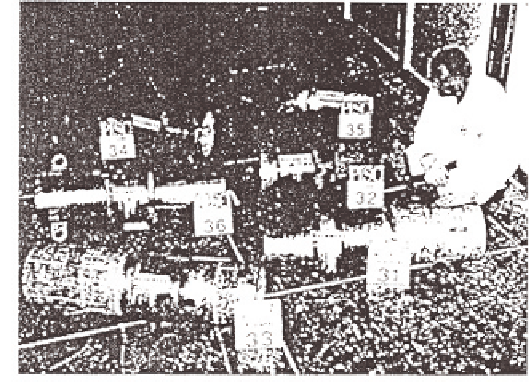Environmental Engineering Reference
In-Depth Information
5.28
The experimental test specimens of austenitic steel (for
Fig. 5.26 and 5.27), PISC-III programme.
Systematic errors
are caused by factors operating in the same manner
in inspection under the same conditions or they change the results if the
inspection conditions change.
Random errors
lead to the spread of the results of repeated measurements
with respect to some mean value.
Misses
constitute gross errors associated either with the behaviour of
the operator or with undetected hardware failure.
The authors of this topic considered the effect of these errors in
conjunction with the state of inspection means, methods, and the type and
orientation of the defect.
V.N. Volchenko
75
analyzed the reliability of quality inspection and
singled out the errors of the first (excessive rejection) and second kind
(insufficient rejection). In this case, reliability
D
is estimated by
D
= 1-χ
α
-χ
β
, [5.2]
where χ
α
is the fraction of excessive rejection, χ
β
the fraction of insufficient
rejection.
In the PISC programme it was also attempted to isolate the impact on
reliability of such factors as the physical method of inspection, inspection
methods, excessive rejection and insufficient rejection, 'human factor', the
type of defect, material.
The dependence of the detectability of discontinuities in:
• physical methods of inspection;
• type and orientation of the defect;
• inspection methods;

Search WWH ::

Custom Search